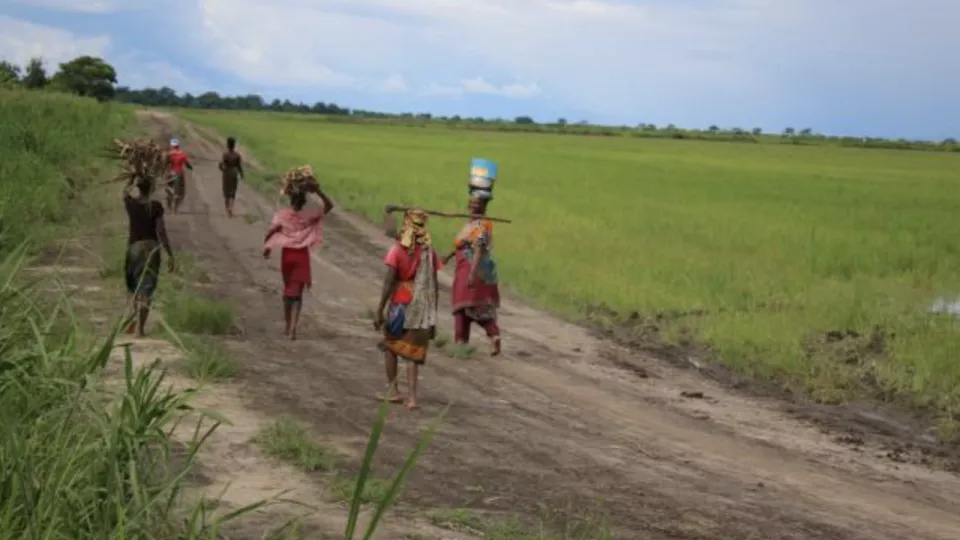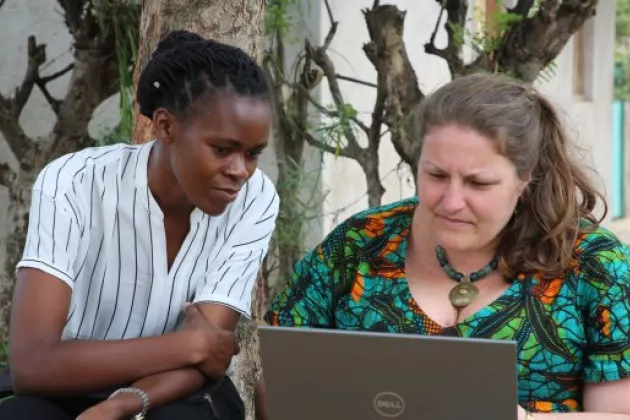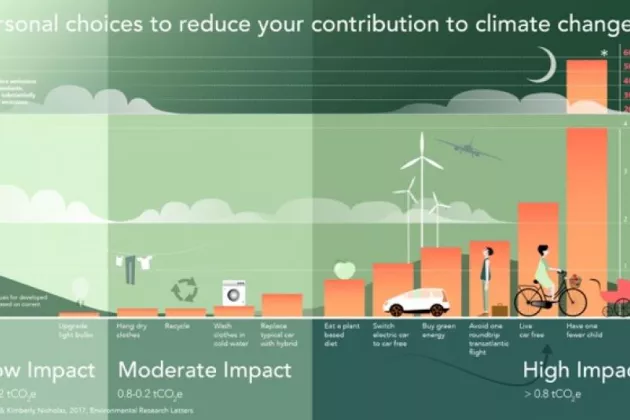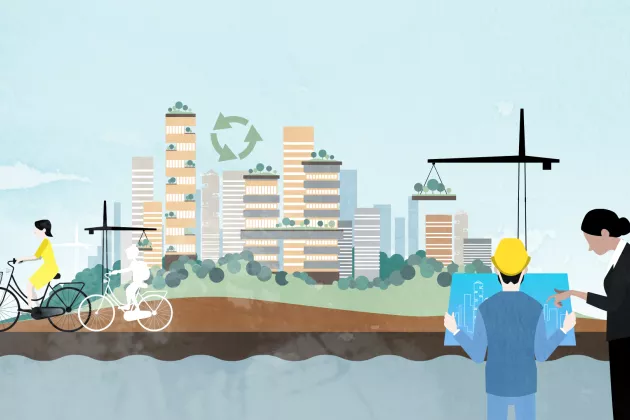Within the research programme LUCID (2008-2018) LUCSUS researchers carried out action research in sub-Saharan Africa. Each with the aim of building capacity on specific issue and improving everyday life, with focus on reducing the risk of ill-health. The research has had clear impact on several Sustainable Development Goals (SDG). Each project worked action oriented with local key individuals who were knowledgeable, trusted, and motivated to make these activities part of their own livelihood, while promoting changes in their surroundings. Each project also used film as a means to bring knowledge to action and make an impact beyond academia.
Improving rural livelihood through the diffusion of sustainable innovations (Kenya)
This project examined the potentials and challenges in the sale of sustainable innovations to rural smallholders in Africa, and the specific and longer-term challenges in both out-scaling (e.g., new regions) and up-scaling (e.g., new technologies, diffusion models) efforts. The research lays the ground for longer-term studies on the understanding innovation diffusion processes, and the characteristics that allow them to self-perpetuate. More specifically, research concentrates on understanding the on-going experiences of an entrepreneur to both sell and finance smoke-free kitchens (i.e., improves stoves) and rooftop water harvesting and storage systems in Nyanza Province in western Kenya. Emphases are placed on the understanding and creating targeted solutions to overcome the main impediments in the numerous developmental phases in the process including poor infrastructural development, competition with aid programs, and poor loan repayment rates.
The film "A Pathway out of Poverty?" presents a market-based initiative to promote sustainable development through the introduction of simple technologies in targeted villages in western Kenya. It focuses on the early successes of the diffusion of cook stoves and rainwater harvesting systems, and the main challenges with sustaining the initiative.
The film "Smokeless Kitchen" presents a project in Nyanza province, Kenya, where improved cook stoves have been introduced to subsistence farmers. The film has had more than 762 000 views on Youtube.
This research address multiple sustainability challenges (SDGs): Climate change; Deforestation/Land use change; Poverty alleviation (time and money savings); Ill-health (indoor air pollution)
Key impacts: health, sanitation, food security, social entrepreneurship, livelihoods
Soil fertility improvements for small-scale farmers (Uganda)
In an action research project involving Ugandan smallholder farmers in collaborative experimentation on the use of human urine as a crop fertilizer, researchers explored farmers' perceptions and evaluation of the practice as a potential and partial solution to soil productivity problems. Findings showed that urine fertilization is valued as a low-cost and low-risk practice contributing to significant yield increases, suggesting important contributions to food security and income, especially for those who have few options in soil nutrient management. Weaknesses identified by farmers related mainly to limitations in collection and storage capacity rather than to inherent traits of the practice. In conclusion, urine fertilization should be acknowledged as a valuable strategy for supporting sustainable agricultural intensification. Furthermore, the importance of social norms and cultural perceptions should be recognized but not treated as absolute barriers to diffusion of the practice. Collective action, where groups of farmers jointly develop new procedures and adapt practices, serves as an important arena for social change and negotiation of norms and taboos, which can otherwise limit the acceptance and diffusion of alternative soil management practices. The research illustrated that transdisciplinary research can guide pathways towards sustainability through locally anchored and solutions-oriented knowledge generation.
The film "Human Urine as Fertilizer" is an instruction of how to use human urine as fertilizer. It's based on work by farmer groups in Paya, Tororo district in Uganda, together with Elina Andersson.
This research address multiple sustainability challenges (SDGs): rural poverty, food insecurity, agricultural sustainability, ill-health
Key impacts: Soil productivity; resource circulation, food production increase, social entrepreneurship; gender empowerment, sanitation, co-creation of knowlege (researchers and local communities)
Building capacity for improved sanitation and menstrual hygiene (Tanzania)
Poor Menstrual Health Management in Africa has shown to impact both physical and mental health, school performance and attendance, and the environment – key factors relevant for achieving a number of the United Nations Sustainable Development Goals. In an pilot study researchers from LUCSUS and University of Dar es Salaam assessed the cultural acceptability and management challenges of different menstrual products among adolescent school girls in the rural area of the Mara region, Tanzania.
The study showed that the state and conditions of the school WASH facilities posed a significant barrier to sustain a good standard of hygiene during menstruation, which is a key factor to girls staying home during their period. The study found that the menstrual cup was perceived as the most preferred menstrual option among the girls because of its multiple benefits. The potential for the menstrual cup to make a difference for girls health and education is tremendous. The cup also has the ability to have a positive impact on other sustainability challenges such as water and sanitation, waste management and gender inequality.
The research project has led to new studies of other aspects of Menstrual Health Managements in collaboration with local NGOs and other research institutions. The research has also helped to form new policies which has lead to improved access to menstrual products for women in Tanzania.
The film "Breaking the Silence" highlights the challenges with Sustainable Menstrual Health Management in rural Tanzania.
Improved and sustainable Menstrual Health Management has the ability to impact the SDGs by:
- Decreasing the ailments and diseases linked to the use of unsafe menstrual products and management – improving female health and well-being (SDG 3)
- Keeping girls in school and eliminating gender disparities in education – ensuring equal access to quality education for boys and girls (SDG 4)
- Empowering females to reclaim their dignity and confidence – contributing to achieving gender equality (SDG 5)
- Providing better menstrual hygiene facilites – reducing diseases linked to poor water and sanitation (SDG 6)
- Enabling women to work during their period – vastly increasing their chances for decent work (SDG 8)
- Decreasing clogging of sanitation systems and environmental pollution – contributing to sustainable citites and communities (SDG 11)
- Reducing the amount of chemicals and natural resources used in production and promoting sustainable consumption (SDG 12)
Policy brief: Towards Sustainable Menstrual Health Management in Tanzania ( By Sara Gabrielsson)
Action research and film as a way to create to impact beyond academia
To create impact beyond academia researchers involved in the projects produced documentary films that were used in "educational campaigns" and during workshops in the communities involved to build capacity on the specific issue as well as to increase awareness and inform policy makers. The films has also been disseminated broadly to communicate about the research and increase awareness amongs the public, e.g through media. With these films we aim to encourage additional efforts to pursue socially-engaged research on issues of pressing concern to people and tangibly contribute to strategies and action towards sustainability. Taking research outreach efforts seriously also reflects the ambitions of transdisciplinary research to concretely bridge science and society. The medium of film offers the potential for broad outreach and effective communication with a diversity of actors, including those who lack access to traditional forms of academic publishing. The film, therefore, is also an example of moving beyond the mere “reporting back” of findings to those directly involved in the research
Video: Making Research Matter More
The film Smokeless Kitchen (2013) has more than 762 000 views on Youtube, Human Urine as Fertilizer (2013) has about 8 000 views, A Pathway out of Poverty? (2013) has 800 views and the film Breaking the silence (2018, translated to different languages) has more than 1000 views in total.
In order to spread information about practices (their pros and cons) and to galvanise communities to action the researchers also organised workshops, where communities were invited for information and exchange of ideas.
Who has benefitted and in what ways?
Type 1 Beneficiaries: These are people who have acted as local entrepreneurs who have benefited both from the activities of improving everyday life in and of themselves, but who have also taken an active role in developing the ideas and spreading the ideas to others. For example individuals who have set up businesses to promote clean cooking, water harvesting, and menstrual hygiene in their regions, people who are locally manufacturing improved cook stoves or making flue pipes for smokeless cooking, and people who have scaled up innovations for food security and thereby created market opportunities for others in the neighbourhood. The known number of Type 1 Beneficiaries is limited to the individuals who have been directly involved in our research projects. The estimated number is 100 - 120.
Type 2 beneficiaries: These are people who have adopted the ideas from the action research and thereby improved their everyday lives (including health), and hopefully increased their chances of getting out of poverty. Based on the number of type 1 beneficiaries we estimate that ~ 600 families have adopted “smokeless kitchen”, ~100 have invested in water harvesting, ~500 families have got new market opportunities from entrepreneurs, ~1200 adolescent girls have accessed improved menstrual hygiene in the last months of 2018 and numbers are rapidly rising.



